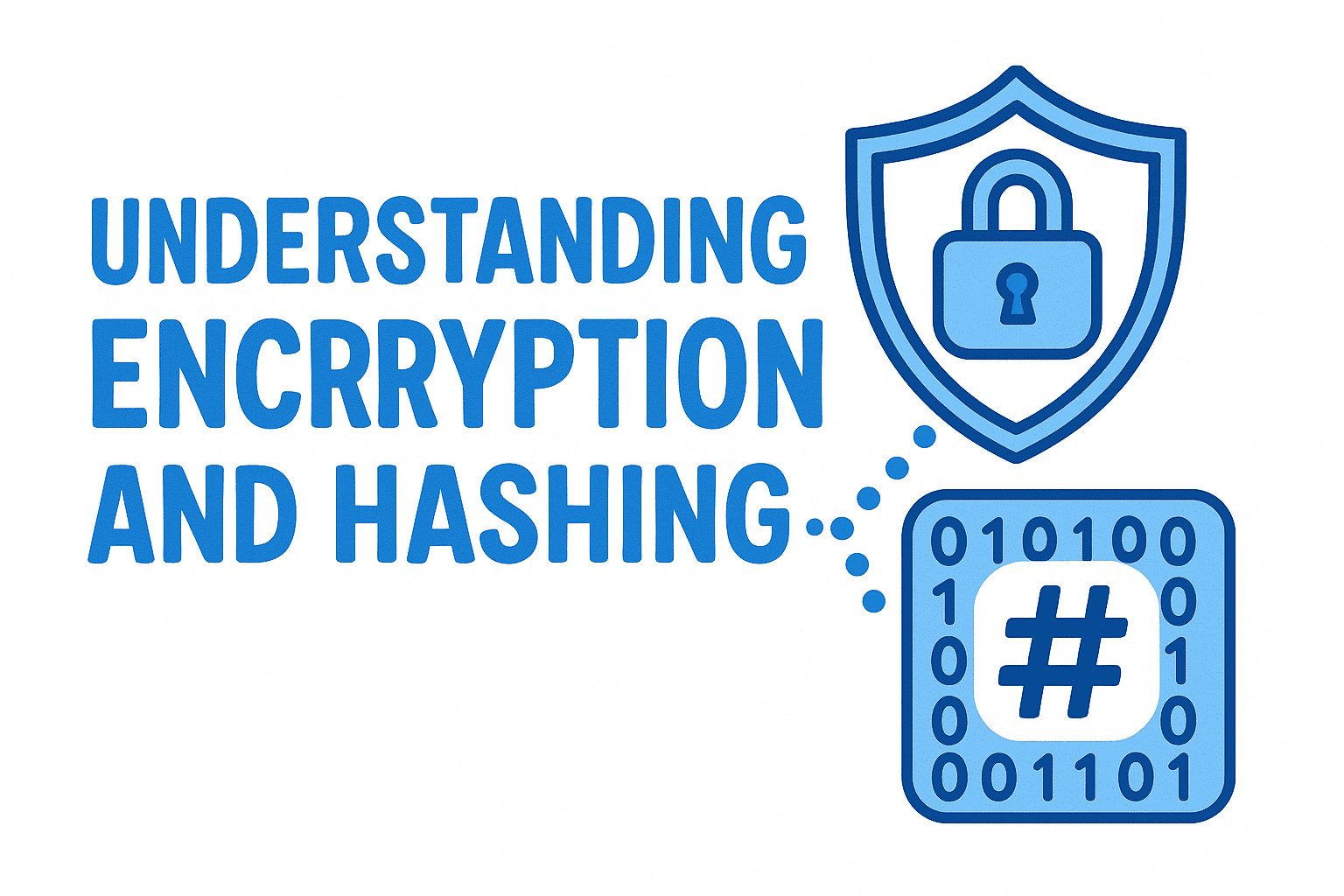In an era where data breaches and cyber threats are increasingly common, understanding the tools that protect our digital lives is essential. Encryption and hashing are two foundational concepts in cybersecurity, but they serve distinct purposes. This article explores the history of these techniques, their types, and when to use each to safeguard your data.
A Brief History of Encryption and Hashing
Encryption:
The roots of encryption trace back to ancient civilizations. The Caesar cipher, used by Julius Caesar around 50 BCE, was one of the earliest forms of substitution encryption. During World War II, the Enigma machine revolutionized cryptography by introducing complex mechanical encryption, which was later破解 by Allied cryptanalysts like Alan Turing. The modern era of encryption began in the 1970s with DES (Data Encryption Standard), developed by IBM and adopted as a federal standard. Over time, DES was replaced by AES (Advanced Encryption Standard) in 2001 due to vulnerabilities, marking a shift toward stronger symmetric encryption algorithms.
Hashing:
Hashing has its origins in the early days of computing, where it was used to verify file integrity. The concept gained traction with MD5 (Message Digest Algorithm 5), introduced in the 1990s, which became widely used for generating fixed-size "fingerprints" of data. However, as computational power advanced, weaknesses in MD5 and similar algorithms (like SHA-1) were exposed. Today, the SHA-3 family and other modern hashing algorithms provide robust security for data integrity checks.
Types of Encryption: Confidentiality and Key Management
1. Symmetric Encryption
- How It Works: Uses a single key for both encryption and decryption.
- Examples: AES (Advanced Encryption Standard), DES, Triple DES, RC4.
- Use Cases: Ideal for encrypting large volumes of data quickly. Commonly used in protocols like TLS (HTTPS) to secure data in transit.
- Advantages: Fast and efficient for bulk data encryption.
- Best Practices: Always use strong, randomly generated keys and manage them securely (e.g., via key management systems).
2. Asymmetric Encryption
- How It Works: Uses a pair of mathematically related keys—a public key (for encryption) and a private key (for decryption).
- Examples: RSA, ECC (Elliptic Curve Cryptography), Diffie-Hellman.
- Use Cases: Secure key exchange, digital signatures, and encrypting small data payloads. Critical in protocols like SSL/TLS for establishing secure communication channels.
- Advantages: Solves the key distribution problem of symmetric encryption by allowing secure communication without sharing private keys.
When to Use Symmetric vs. Asymmetric:
- Symmetric Encryption: When speed and efficiency are priorities, such as encrypting sensitive files or streaming data.
- Asymmetric Encryption: When securing communications and exchanging keys over insecure channels, like setting up an encrypted connection (e.g., HTTPS).
Types of Hashing: Integrity and Authentication
1. Cryptographic Hash Functions
- How It Works: Transform input data of any size into a fixed-length output (hash). The process is one-way, meaning you can’t reverse-engineer the original data from the hash.
- Examples: MD5, SHA-1, SHA-256, SHA-3.
- Use Cases:
- Data Integrity Checks: Verify that a file or message hasn’t been altered (e.g., checksums for software downloads).
- Password Storage: Store hashed passwords instead of plain text (though modern best practices include salting and using algorithms like bcrypt or Argon2).
- Digital Signatures: Combine hashes with asymmetric encryption to authenticate messages and ensure non-repudiation.
2. Non-Cryptographic Hashes
- Purpose: Used for tasks like data indexing or checksums, but not secure against intentional tampering. Examples include CRC32 (Cyclic Redundancy Check).
When to Use Hashing:
- Always use cryptographic hashes (e.g., SHA-256) for security-sensitive tasks. Avoid deprecated algorithms like MD5 or SHA-1, which are vulnerable to collision attacks.
When to Use Encryption vs. Hashing
| Use Case | Preferred Method | Why? |
|---|---|---|
| Securing Data in Transit | Asymmetric Encryption (RSA/ECC) + Symmetric for bulk data | Combines secure key exchange with fast encryption. |
| Storing Passwords | Hashing (SHA-256 + Salt) | Prevents direct access to passwords; salts add uniqueness. |
| Verifying Data Integrity | Cryptographic Hashing (SHA-3) | Ensures data hasn’t been tampered with. |
| Digital Signatures | Hashing + Asymmetric Encryption | Authenticates the source and integrity of a message. |
Common Misconceptions
-
Hashing vs. Encryption:
- Encryption keeps data secret (e.g., encrypting a document).
- Hashing ensures data integrity or authenticity (e.g., verifying a password).
-
Encryption for Passwords:
- Avoid storing passwords using encryption (e.g., AES). If the database is compromised, attackers can decrypt them. Always hash passwords instead.
-
Weak Hashes:
- MD5 and SHA-1 are outdated and insecure. Use SHA-256 or SHA-3 for modern applications.
Best Practices
- Use Strong Algorithms: AES-256 for encryption, SHA-3 or bcrypt for hashing.
- Salt Hashed Passwords: Add a unique salt to each password before hashing to prevent rainbow table attacks.
- Key Management: Securely store and rotate encryption keys (e.g., via hardware security modules or cloud key management services).
- Stay Updated: Regularly monitor for vulnerabilities in cryptographic standards and update your protocols accordingly.
Conclusion
Encryption and hashing are indispensable tools in the modern cybersecurity landscape. While encryption ensures confidentiality, hashing guarantees integrity and authenticity. Understanding their distinct roles—along with their historical evolution and modern applications—empowers developers and users to make informed decisions about securing digital assets. By choosing the right tool for the job, you can protect data from unauthorized access and ensure trust in your systems.
Remember: Security is a layer, not a single solution. Combine encryption, hashing, and best practices to build resilient defenses in an increasingly connected world.
🚀 Let’s build something amazing! If you have a project in mind or need help with your next design system, feel free to reach out.
📧 Email: safi.abdulkader@gmail.com | 💻 LinkedIn: @abdulkader-safi | 📱 Instagram: @abdulkader.safi | 🏢 DSRPT
Drop me a line, I’m always happy to collaborate! 🚀



